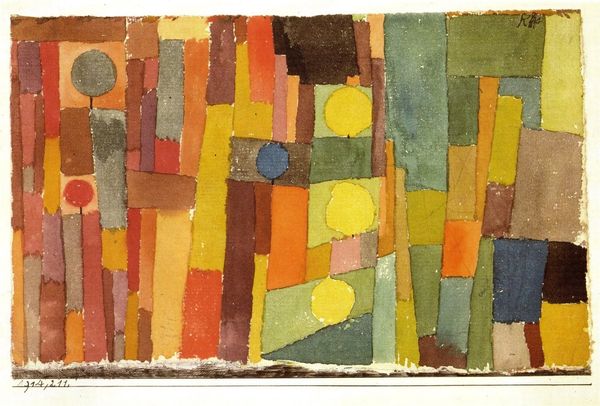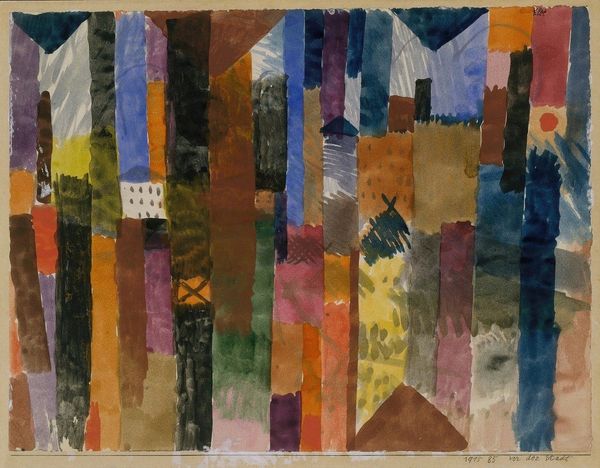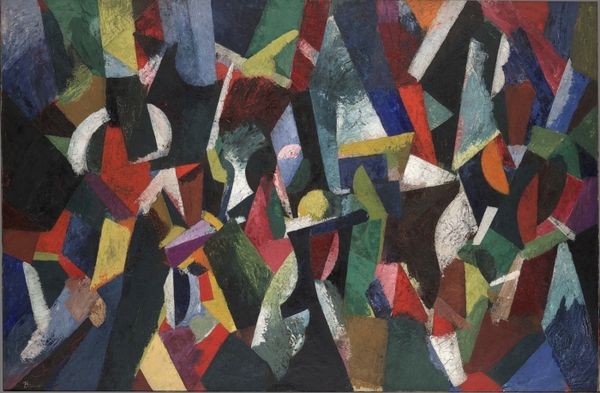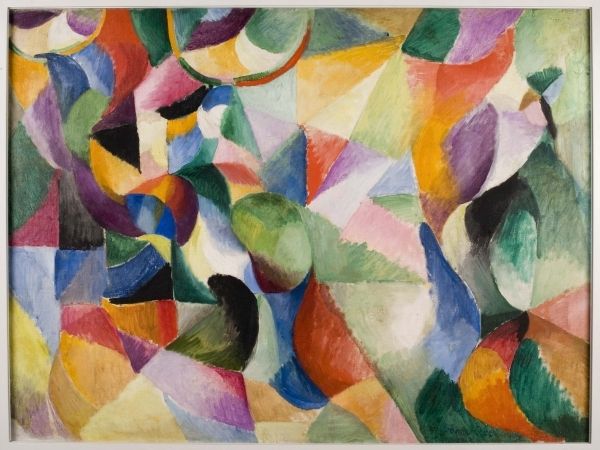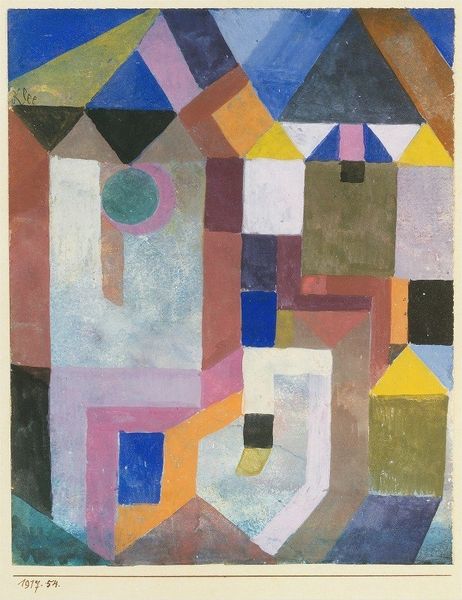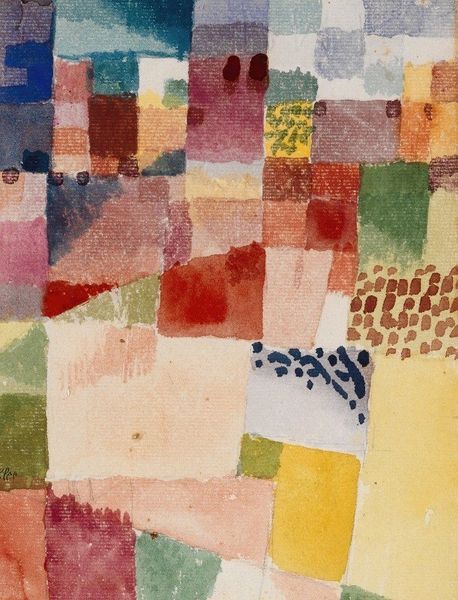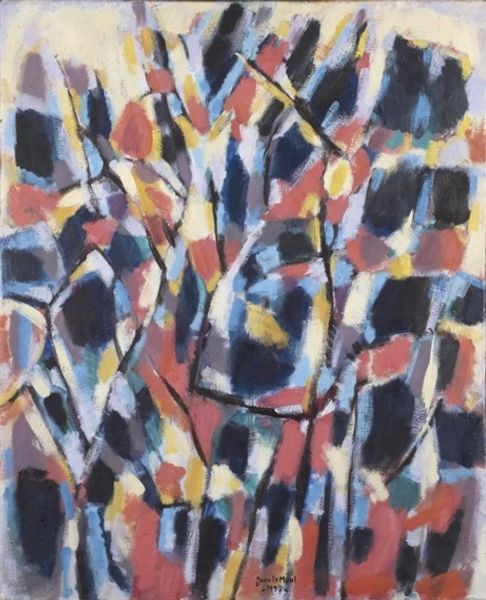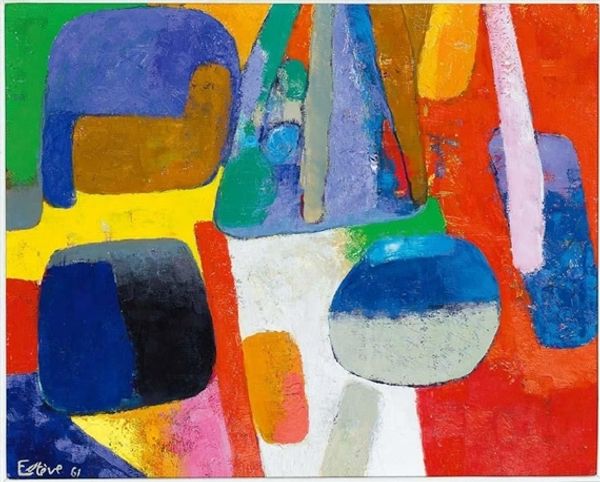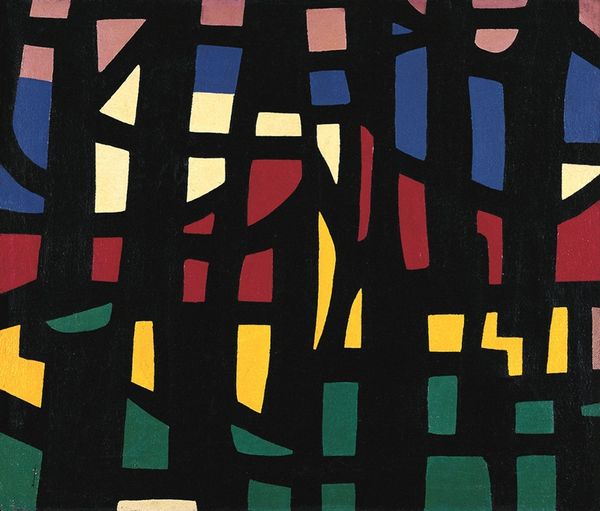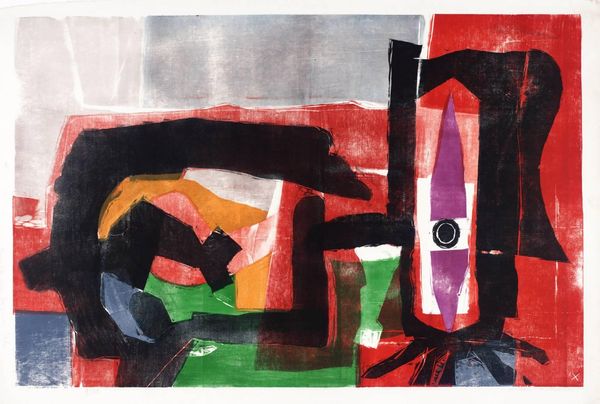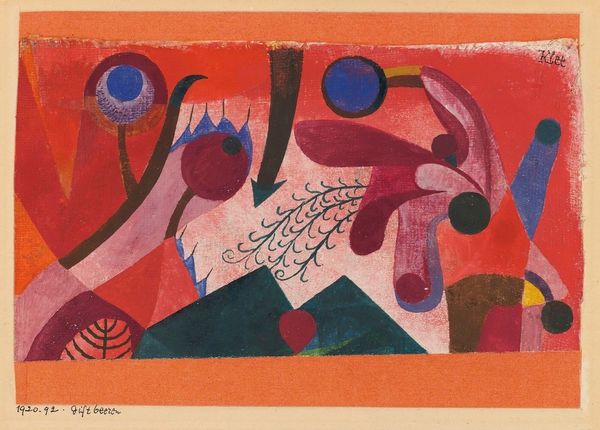
watercolor
#
water colours
#
form
#
watercolor
#
expressionism
#
geometric-abstraction
#
abstraction
#
line
#
modernism
Copyright: Public Domain: Artvee
Curator: Here we have Paul Klee's 1915 watercolor, "Movement of Vaulted Chambers". Editor: It’s a rather soothing color palette. The washes of watercolor create soft-edged geometric shapes, and those pastel shades offer a tranquil sort of vibration, but also quite modernist. Curator: Indeed, it represents Klee's early exploration of abstraction. It emerged from a time when Klee was becoming deeply engaged with the avant-garde and modernism in general, particularly the styles of Cubism and Expressionism, yet distinct from both. Editor: Looking at the application of the pigment, I’m struck by how carefully each colour seems placed next to another, almost like tesserae in a mosaic, creating form with pigment in layers. You know, watercolor in 1915 would have been produced in a more direct fashion from source minerals, meaning that the hand processing to create that colour, at least from a labor standpoint, would have been visible in the final form. Curator: Absolutely, and that consideration of placement lends the composition its dynamism. You have this visual architecture of geometric forms suggesting, as the title indicates, an implied space, or possibly multiple spaces simultaneously. Klee was also greatly concerned with notions of spiritual abstraction, trying to create an art beyond the visible world that accesses pure thought. Editor: The translucent effect achieved by layering allows colours to interact, producing depth despite the lack of traditional perspectival representation. Consider too, the type of paper selected would create the initial level of control and influence the blending abilities. We have to account for every element of making, no? Curator: Agreed, although I might propose the ‘vaulted chambers’ reference also concerns an almost subconscious space too, with allusions to utopian projects undertaken just before the conflagration of the First World War took hold in Europe. This might be less a physical structure and more an imagined one, perhaps Klee was searching for alternatives through a purely aesthetic, but ultimately civic-minded vision? Editor: Whether literal or figurative chambers, what strikes me is the physical crafting to create this image. Its tactile properties become paramount to appreciating its message about process. Curator: It prompts reflections on the societal moment and the artistic movements brewing at the time, certainly. Editor: It does—more specifically about Klee’s individual processing of pigment meeting politics in society, wouldn’t you agree?
Comments
No comments
Be the first to comment and join the conversation on the ultimate creative platform.
